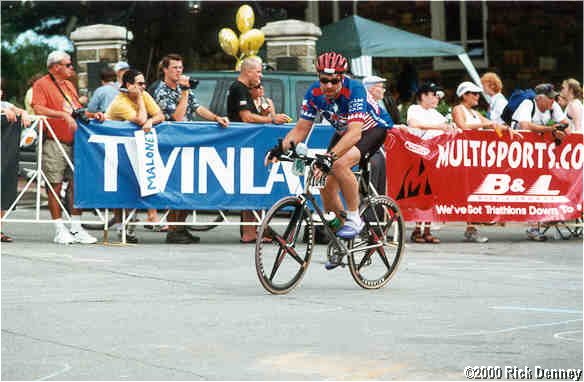Shockwave wrote:First you say additional speed doesnt add any excitement to the race, so recumbents are unnecessary. Then you say adding more speed does add excitement, but only at a slow speed up a steep hill or accelerating. By amazing coincidence, the two things you value in a race are the only two that your kind of bike is ever so slightly better at.
Yup. It's a big conspiracy. Me and the UCI are in cahoots. They tell me I'm supposed to like acceleration and the on-the-edge drama of the big climbs, and so that's what I like because it helps me support their restrictions on bike design.
Watching recumbent riders is like watching grass grow. Who cares if they are going fast? You get no sense of speed. Why? Because there are no big accelerations, no side-to-side bike throwing during a sprint--in fact--no sprints to speak of, and no out-of-the-saddle grinding up big climbs. They may BE fast, but they don't LOOK fast. There's a reason these are the parts of the courses most densely lined with spectators in the big tours. This is where you find the drama and excitement of bike racing.
It's the same reason why NASCAR (or, moreso, Formula One) is more exciting than Indy-car racing these days, though both use basically the same courses. The Indy cars are much faster, but the NASCAR races include a lot of wheel action that I don't see with the Indy cars. Even in car racing, however, measures are taken to limit the speed of the vehicles to make sure that what is exciting about watching a race doesn't get lost in attempts to merely go faster. These are professional sports that would wither and die if they didn't put the quality of the spectacle first and foremost in their thinking.
Having ridden recumbents, I can also say that they are an acquired taste in riding. I have climbed hills in a recumbent that made me wish I had a 15-tooth chainring, and I longed for the ability to get out of the saddle and sprint up the hill and get it over with. Steering many recumbents is an exercise in abstraction, with the only palliative factor being that you have less far to fall. I've been flamed by 'bent riders over such statements in the past, but that's my experience with them and I'm standing by it. I think there would be quite a bit fewer recreational riders (i.e., people, including kids, who just cruise their neighborhood streets) if all bikes were recumbent. If I had a bad back and could not ride a conventional bike, I'd ride a recumbent and be glad of the opportunity, but I don't think it's a bike for the masses.
That's another reason NASCAR is more popular than open-wheel racing--the cars look more like OUR cars, and we can relate to them more easily. Again, bike racing is a professional sport that must draw spectators to be successful.
There's a big difference between speed and quickness. For the sheer pleasure of riding and of watching bike races, I'll take the latter.
After the Ironman I went for a ride on my Merckx road bike. My time-trial bike has a forward position and is optimized (to the extent possible with me) for aerodynamic positioning. It is not UCI-legal but it does look like a conventional bike (it is legal in triathlon, of course). But it's not an easy bike to sprint because of the geometry. That first ride back on my Merckx, which is a sprinter's dream, filled me with such pleasure and excitement that the tri-bike has literally not been ridden since. It's still hanging on the wall with the Ironman numbers taped to it. I love the feel of acceleration when I get out of the saddle and sprint, despite that everyone else is leaving me behind.
Rick "who thinks mere speed is not the point" Denney





